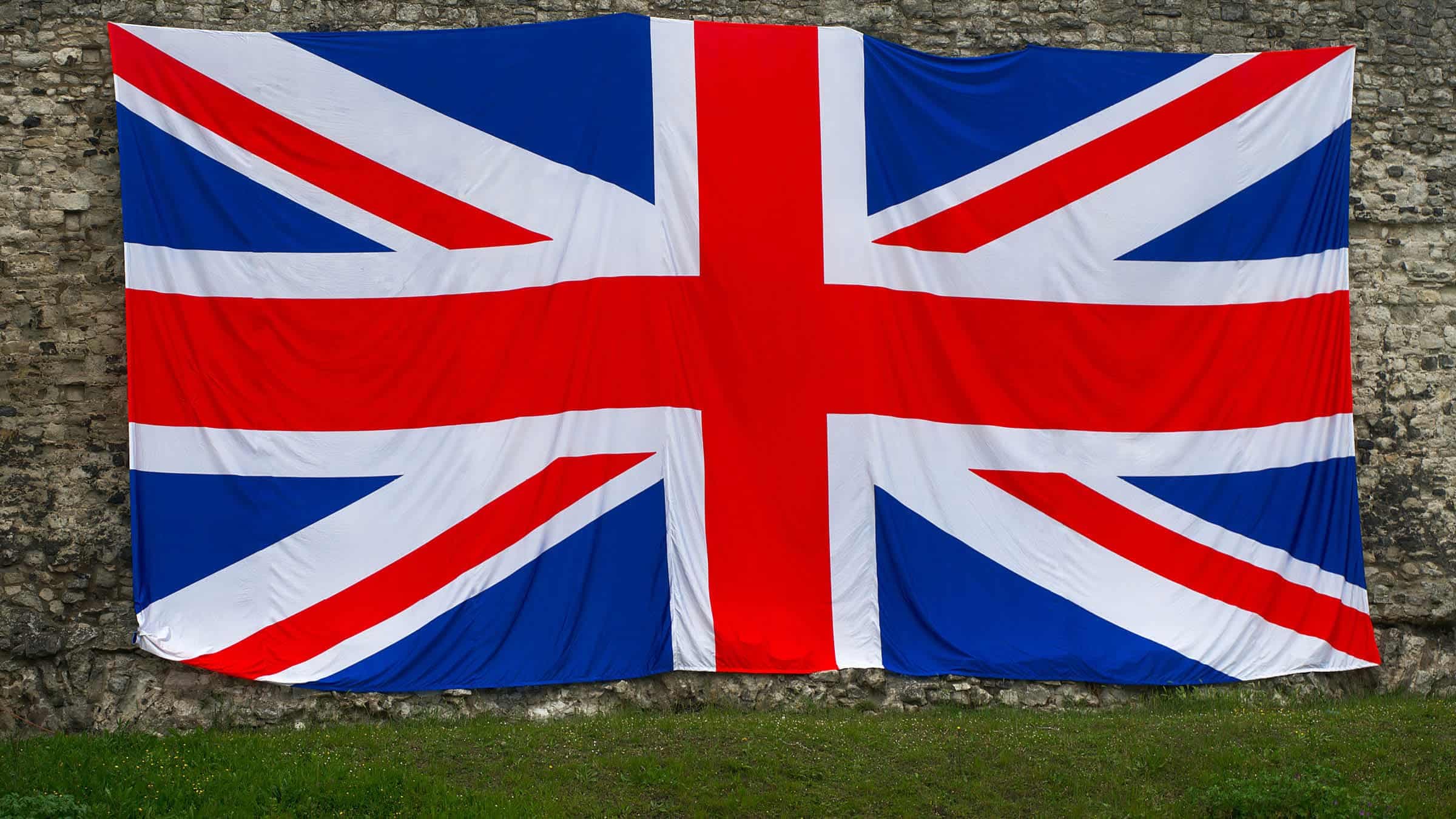The Union Jack is back in fashion — but is our Britishness feeling fractured?

The Union Jack can seriously push some buttons. With the World Cup coming up, the flag is set to be splayed everywhere, and we will undoubtedly be wearing the colours to support Britain’s favourite sport. But, it can often miss the mark when context is not truly understood, and with the likes of Brexit and the adoption from far-right groups, it can be seen as a symbol of volatility.
However, following the death of the Queen, the flag has been used as a sign of respect and has brought people across the country together. Fashion Week took place on the same week as the Queen’s funeral and the flag was used as a tribute to Britishness. Dilara Findikoglu, for example, designed a gothic minidress that harnessed 70s punk and deconstructed Vivienne Westwood likeness for an artistic interpretation on what the Union Jack means to design.
But can we ever truly trust the flag to have a singular context and meaning again? Does it simply mean patriotism, or, when worn by the right person, can it create a cultural renaissance?
Historically, many associate the Union Jack with far-right groups, who use it as a symbol to disguise extreme views under the mask of Britishness. Within these groups, they cross the line of ‘patriotism’ into racism, and use reference points of quintessentially British symbols to fuel their views. Groups that misinterpreted the flag included “skinheads”, football hooligans and the National Front, who peaked in the 1970s and cemented red, white and blue to these ideals of hatred. The ambiguities of what it meant to Britain had changed at this point; dangerous nationalism as opposed to patriotism.
But even the word patriotism has its roots in the British Empire, and the room for ironic use of the national flag was no joking matter. Many felt that avoidance was essential, and that the obscurity brought about by these groups had tainted the flag.
Patriotism is rooted in country pride and many view this as walking a morally dangerous line, stepping into chauvinism. However, under the theory of British-born philosopher Kwame Anthony Appiah, the idea of patriotism starts to hold a different meaning in the modern world. He suggests that attachment to the homeland and cultural particularities includes appreciating different places and people, with a robust respect for equal moral worth of humans.
There have been examples across pop culture that put forward a political message by using the Union Jack and in turn, subcultures have transformed it. This generation now view the flag through cathartic fashion moments, such as items worn by The Who, Sex Pistols, Vivienne Westwood, David Bowie and, of course, Ginger Spice to name a few.
Everyone has their own iconic UJ moment, but taking into account the return of 90s and 00s style, Cool Britannia and Britpop provide us with some of the most inspiring looks for flag-related fashion, and for the right reasons this time.
The Dadaist movement was its predecessor, and used provocative humour to shape pop art. It was adopted into the Swinging Sixties, and then 70s punk and post-punk pop thereafter, and was seen in bulk as imitated patriotism that gave two fingers to the establishment. It had cultural significance, and by using the parodies that came before it, Cool Britannia harnessed this and realised there was now an immediacy that felt synonymous with the time.
Euro 96 was the first international football tournament in England since the ‘66 World Cup, and the St George’s Cross symbol was in full force. It was never considered of great significance since far right groups, but was being used as a sign of countrywide pride in a new manner.
Tony Blair, who became Labour Party leader in ‘94, tried to reclaim the flag, and like many politicians, made it contentious again at the time. However, in his appearances to celebrate British music, he rallied behind Cool Britannia, saying at the Brit Awards “British music is back once again on top of the world”.
But it was the musicians at the time that truly reclaimed the Union Jack. Liam Gallagher, an emblem of Britpop, was even quoted saying “It’s the greatest flag in the world and it’s going down the shitter… We’re here to do something about it.” Oasis wore flag coated parkas and lay in UJ bedsheets on mag covers at the height of the band’s mania, but were most known for the use of Noel Gallagher’s iconic Epiphone Supernova guitar. The face of Cool Britannia Kate Moss was also wearing red, white and blue like it was going out of fashion, even donning Mick Jagger’s famous cape from his 1982 world tour.
With the return of Cool Britannia elements in fashion, modern times have also flagged up some iconic moments. Dua Lipa wore a Vivienne Westwood Union Jack-et at the Brits in 2021, and later on a patterned skirt in her tour. It was a nod to postmodern sartorial pop culture that connected her to those who wore it before her — even Geri Halliwell sent her blessing. One of the most notable wearers of our time is Stormzy, who took the stage of Glastonbury in 2019 in a Banksy bulletproof vest that showed a monochrome flag, and used it as a visual symbol to narrate the story of a divided nation.
So if the Union Jack is making its comeback, then yes, the history should be taken into account. However, now more than ever is the symbol of the flag so poignant. After a nationwide pandemic, tumultuous time in politics and questions of what it means to be British, the repossession will show that British ‘pride’ has a whole future ahead of it, and a whole new meaning to this generation.

